Distinct composition and amplification dynamics of transposable elements in sacred lotus (Nelumbo nucifera Gaertn.)
- PMID: 35959634
- PMCID: PMC9804982
- DOI: 10.1111/tpj.15938
Distinct composition and amplification dynamics of transposable elements in sacred lotus (Nelumbo nucifera Gaertn.)
Abstract
Sacred lotus (Nelumbo nucifera Gaertn.) is a basal eudicot plant with a unique lifestyle, physiological features, and evolutionary characteristics. Here we report the unique profile of transposable elements (TEs) in the genome, using a manually curated repeat library. TEs account for 59% of the genome, and hAT (Ac/Ds) elements alone represent 8%, more than in any other known plant genome. About 18% of the lotus genome is comprised of Copia LTR retrotransposons, and over 25% of them are associated with non-canonical termini (non-TGCA). Such high abundance of non-canonical LTR retrotransposons has not been reported for any other organism. TEs are very abundant in genic regions, with retrotransposons enriched in introns and DNA transposons primarily in flanking regions of genes. The recent insertion of TEs in introns has led to significant intron size expansion, with a total of 200 Mb in the 28 455 genes. This is accompanied by declining TE activity in intergenic regions, suggesting distinct control efficacy of TE amplification in different genomic compartments. Despite the prevalence of TEs in genic regions, some genes are associated with fewer TEs, such as those involved in fruit ripening and stress responses. Other genes are enriched with TEs, and genes in epigenetic pathways are the most associated with TEs in introns, indicating a dynamic interaction between TEs and the host surveillance machinery. The dramatic differential abundance of TEs with genes involved in different biological processes as well as the variation of target preference of different TEs suggests the composition and activity of TEs influence the path of evolution.
Keywords: Nelumbo nucifera; amplification; genes; intron; retrotransposon; target specificity; transposon.
© 2022 The Authors. The Plant Journal published by Society for Experimental Biology and John Wiley & Sons Ltd.
Conflict of interest statement
The authors declare that they have no conflicts of interest.
Figures
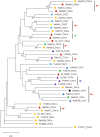
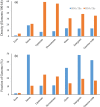
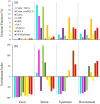
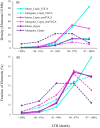

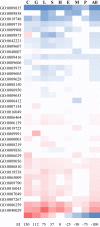
Similar articles
-
The NnCenH3 protein and centromeric DNA sequence profiles of Nelumbo nucifera Gaertn. (sacred lotus) reveal the DNA structures and dynamics of centromeres in basal eudicots.Plant J. 2016 Sep;87(6):568-82. doi: 10.1111/tpj.13219. Epub 2016 Aug 2. Plant J. 2016. PMID: 27227686
-
Identification, characterization and distribution of transposable elements in the flax (Linum usitatissimum L.) genome.BMC Genomics. 2012 Nov 21;13:644. doi: 10.1186/1471-2164-13-644. BMC Genomics. 2012. PMID: 23171245 Free PMC article.
-
Comprehensive analysis of the Xya riparia genome uncovers the dominance of DNA transposons, LTR/Gypsy elements, and their evolutionary dynamics.BMC Genomics. 2024 Jul 12;25(1):687. doi: 10.1186/s12864-024-10596-5. BMC Genomics. 2024. PMID: 38997681 Free PMC article.
-
Mammalian transposable elements and their impacts on genome evolution.Chromosome Res. 2018 Mar;26(1-2):25-43. doi: 10.1007/s10577-017-9570-z. Epub 2018 Feb 1. Chromosome Res. 2018. PMID: 29392473 Free PMC article. Review.
-
LTR-retrotransposons in plants: Engines of evolution.Gene. 2017 Aug 30;626:14-25. doi: 10.1016/j.gene.2017.04.051. Epub 2017 May 2. Gene. 2017. PMID: 28476688 Review.
Cited by
-
Celine, a long interspersed nuclear element retrotransposon, colonizes in the centromeres of poplar chromosomes.Plant Physiol. 2024 Jul 31;195(4):2787-2798. doi: 10.1093/plphys/kiae214. Plant Physiol. 2024. PMID: 38652695 Free PMC article.
-
Dynamics of accessible chromatin regions and subgenome dominance in octoploid strawberry.Nat Commun. 2024 Mar 20;15(1):2491. doi: 10.1038/s41467-024-46861-0. Nat Commun. 2024. PMID: 38509076 Free PMC article.
References
-
- Agren, J.A. & Wright, S.I. (2011) Co‐evolution between transposable elements and their hosts: a major factor in genome size evolution? Chromosome Research, 19, 777–786. - PubMed
-
- Altschul, S.F. , Gish, W. , Miller, W. , Myers, E.W. & Lipman, D.J. (1990) Basic local alignment search tool. Journal of Molecular Biology, 215, 403–410. - PubMed
-
- Anderson, S.N. , Stitzer, M.C. , Brohammer, A.B. , Zhou, P. , Noshay, J.M. , O'Connor, C.H. et al. (2019) Transposable elements contribute to dynamic genome content in maize. The Plant Journal, 100, 1052–1065. - PubMed
-
- Badouin, H. , Gouzy, J. , Grassa, C.J. , Murat, F. , Staton, S.E. , Cottret, L. et al. (2017) The sunflower genome provides insights into oil metabolism, flowering and asterid evolution. Nature, 546, 148–152. - PubMed
Publication types
MeSH terms
Substances
LinkOut - more resources
Full Text Sources
Miscellaneous

